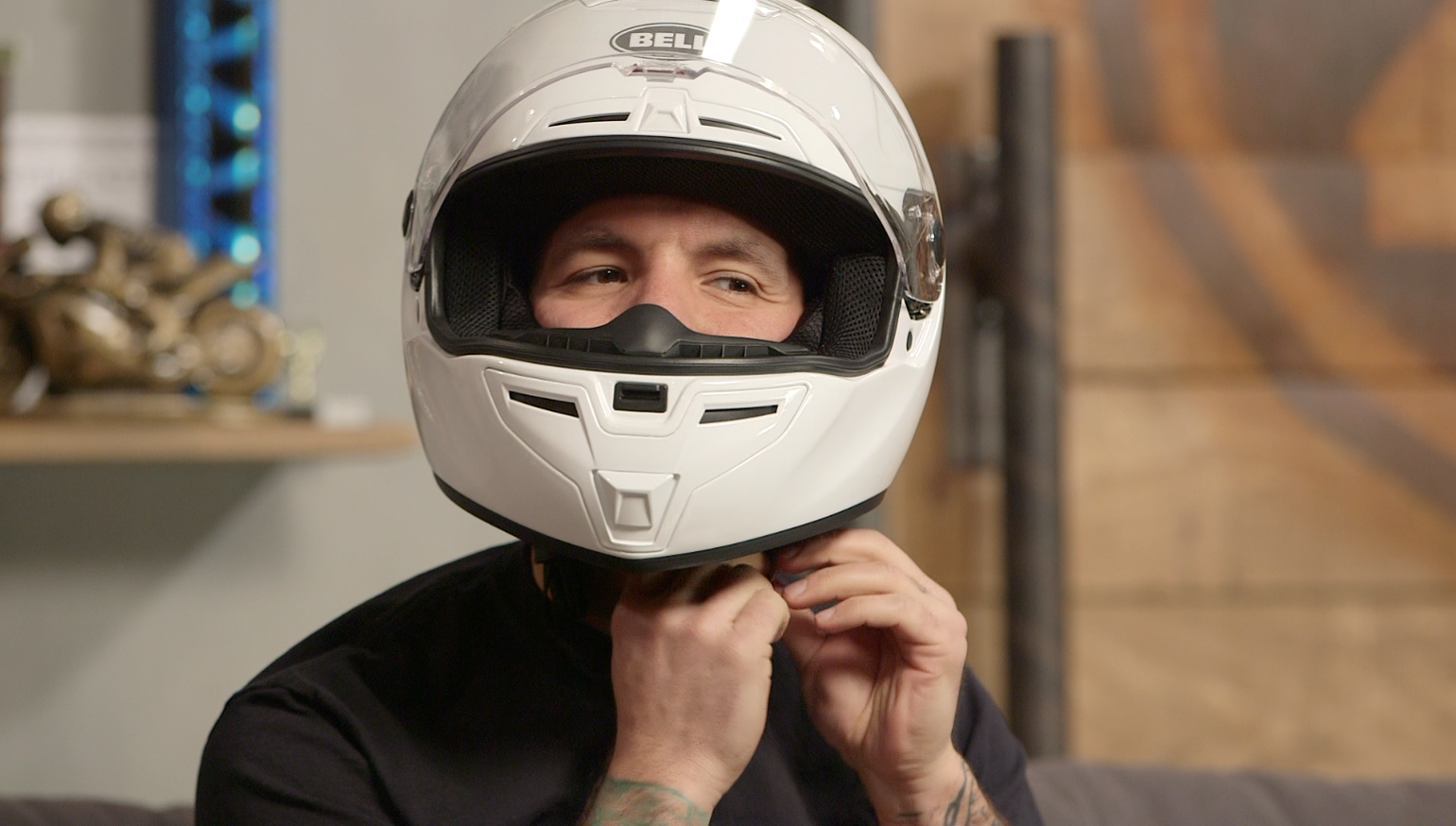The motorcycle helmet is the most important piece of equipment you’ll buy so it needs to fit well, feel comfortable and, of course, protect you if you have a fall.
Start by using a cloth tape measure and taking your head circumference, then compare that number with a manufacturer’s helmet sizing chart.
Size
Finding a helmet that really fits your skull requires choosing one that’s made for a head your size and shape – and not necessarily one from an expensive name brand that has been safety-tested and certified (more expensive helmets will probably feel better on your head, though).
To find your helmet size measurement, use a cloth tape measure or a string you have at home to determine your largest seating circumference (above your eyebrow line and around the thickest part of the back of your head). This is where your discovery will come in handy!
If you know your size, you can then take the time to put on and wear a helmet for some short test rides to see how it sits on your head. It should fit snugly all around and not be tight. It should sit squarely on the head, not on a slant. It should not move back and forth more than an inch or inch and a half when pushed forward and backward with two fingers.
Shape
Your lid should fit you like a glove that’s snug but acceptable to wear all day long. Pinching spots on the forehead, ears or jaw/chin have no place and should not create problem areas that go unnoticed until later in the ride.
And to ensure its stays that way, slip your finger between helmet and skull: it shouldn’t be easy, but it should be possible.
Some even have very specific head shapes that simply must be matched when purchasing a helmet. Ask a third party to pull an overhead photo, flatten your hair, and compare that photograph to references available online (or filter by helmet shape at Revzilla, the three most common being long oval, intermediate oval and round).
Style
Although there are helmets designed for particular riding styles, the final decision is more likely to come down to personal preference. Touring riders will be more concerned with additional comfort for long journeys, while off-road enthusiasts will want ventilation and lightweight types that reduce pressure.
Though aesthetics and the colour of the shield can be a little tempting, what counts at the end of the day is that it fits on your head. So follow what your bike helmet manufacturer says to do for getting the best fit.
Whether full-face, half shell or modular, it should meet safety standards established in your country (DOT and Snell certifications are best). Pricey is not always synonymous with safe – shop with knowledgeable retailers who will guide you toward a proper fit to match your head shape and needs for added open road peace of mind.
Safety
Whether you ride street or dirt, and whether you prefer half- or full-faced models, the most important element in your purchase should be the materials composition of your helmet, in addition to fit, comfort and additional features. The type of materials in your ‘lid will directly affect the performance of your helmet in an accident or in the course of normal wear-and-tear.
Make sure the helmet you buy meets Department of Transportation (DOT) standards or Snell standards. Higher-end brands might be tested more thoroughly.
When trying a helmet on, shake your head from side-to-side, up-and-down, several times before finally choosing it. When it protects you in an accident, it needs to sit firmly in place, but the fit should be tight yet not too tight – meaning that, while it might give you a headache after all, it didn’t slide around on your endocast and, in an accident, it will stay put. Check that the cheek pads sit snugly against your jaw, neither touching nor poking, also that there’s no gap into which your ears will poke, and, if it might rain, that it’s waterproof.

